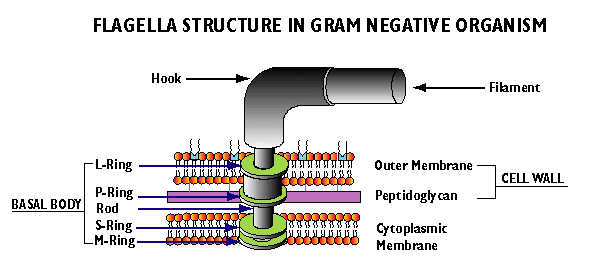Extra Cellular Matrix
It is attached to the cell wall and is made of polysaccharide or
polypeptide,
or a combination of both, to form a viscous layer. If it is thick, structured
and adheres strongly to the cell wall, it is called a Capsule. If
it is disorganized and loosely attached to the cell wall it is called a
Slime
layer. Both capsule and slime layer do not take up simple stains but
can be observed by negative staining with India Ink or Negrosin.
Functions of Capsules - (a). Adhere to surfaces to form colonies.
(b). Antiphagocytic. (c). Antigenic. (d). Protect the organism from dehydration.
Structures for Movement
a. Flagellum
Made of the protein flagellin and consists of a filament,
hook,
and basal body. The basal region has a rod and rings. Gram positive
organisms have 2 rings, one in the cell wall and one in the cell
membrane. Gram negative organisms have 4 rings, 2 in the
cell wall and 2 in the cell membrane. |


